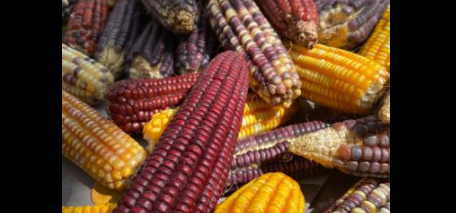Climate change, irregular rains, population growth, and real estate developments threaten the seeds and the milpa, warned Dr. Javier Mijangos Cortés, a researcher at the Natural Resources Unit of the Yucatan Scientific Research Center (CICY).
The specialist said the above this Wednesday, May 4, when giving the details of the U nek’il Ko’ol. Meeting of Seeds of the Milpa 2022, an event that aims to promote the conservation of Mayan ancestral knowledge associated with agriculture, especially the milpa, will take place on May 8 in the community of Xoy, municipality of Peto.
During the meeting, there will be seed exhibition activities, cultural activities, and science outreach activities with the community and high school youth.
According to Mijangos Corté, the main threat to the milpa and the seeds is natural, climate change that has caused changes in rainfall. The expert states that in the last 10-15 years there has been a “very erratic” stage in the rainy seasons in the Yucatan Peninsula.
“It no longer falls regularly as previously scheduled, as has been observed in ages past,” he noted.
Before he specified, we had two fairly intense rainfall peaks, which went from the second half of May to the end of June, but it has been disappearing in such a way that it is no longer higher than what occurs in September and October. “In such a way that even today it has been less than this second rainy season,” he said.
That means, he indicated, “great changes in agriculture, because all people used to sow at the beginning or end of May, however now those who sow on these dates have a great risk of losing their seeds due to lack of rain.”
“The seed germinates, but there is no more rain. The time is prolonged so that there is a strong agronomic rain, which soaks the soil, which can last for enough days so that the plants and seeds can capture it, absorb it and use it in their functions, ”he said.
This, he pointed out, kills all the seeds that are sown at that time. “They are not going to get the seed for the next cycle,” he warned.
This, he added, over time has also generated the loss of seeds from producers; there are even communities that no longer have seeds and have to go elsewhere to get them.
Hence the importance of these seed fairs so that they can get these and plant on their land.
Population and housing increase
Another problem, according to the specialist, is the increase in the population and the houses that settle in what were previously cultivated fields.
“The city and towns have been growing and are occupying spaces that were previously used for agriculture. It is a big problem that we have today,” he said.
Faced with this situation, he indicated that it is necessary to regulate the way in which more is produced with the same area of farmland that exists today.
Milpa, food security for the community
On the other hand, Javier Mijangos affirmed that the ancestral practice of the milpa is a strategy to guarantee the food security of the population. “Without the milpa, the Mayan civilization wouldn’t have been able to settle in the region,” he said.
However, with the passage of time, we have been modernizing and after the Spanish Conquest, Independence and population growth arrived. “Always throughout Mexico, and America, the milpa has become a fundamental part of the growth and development of all societies,” he stressed.
U nek’il Ko’ol. Meeting of Seeds of the Milpa 2022
Miguel Ángel Fernández Barrer, technical manager of the Milpa project, from the CICY, explained that this event will also consist of the sale, exhibition, and exchange of seeds, which will open at 9 in the morning and end at 2 in the afternoon this 8 May in the community of Xoy, municipality of Peto.
In addition, there would be scientific dissemination activities through the CICY Talents program so that the community can get to know more about the Milpa; as well as scientific talks aimed at producers with researchers from the CICY, the National Institute of Forestry, Agricultural and Livestock Research (INIFAB), the Technological Institute of Conkal, Tizimín, on topics such as pests and diseases in the Milpa; biofertilization and the importance of organic fertilizers in the Mayan milpa, and the research projects that are being crowded in relation to the milpa will be disclosed.
TYT Newsroom


